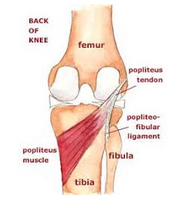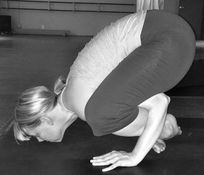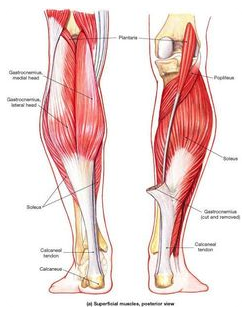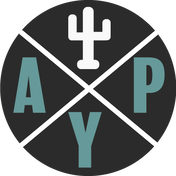|
The Popliteus Muscle and its Role in Yoga Postures and Movement
 Knee issues can cause a lot of concern on how to create the proper stability and comfort in each pose, in order to not exacerbate the condition any further. The popliteus muscle is a very small, triangular-shaped muscle that can be a contributing factor in a lot of painful and inhibited movement. It originates from the lower portion of the femur (lateral femoral condyle on the superior), and inserts on the upper portion of the tibia (medial tibial condyle, on the posterior). For those who have had any ACL/MCL surgery, this muscle becomes extremely tight. Primarily, the popliteus bends the knee from a straightened position and stabilizes the back of the knee. It also helps to turn the knee inward and the hip outward. And acts as a shock absorber while walking. If it becomes very tight, it will pull the knee and hip out of alignment. When the popliteus is tight, the misalignment in poses such as warrior 2 become extremely visible.  I’ve seen this muscle, when tight, restrict the ability for practitioners to forward bend, have difficulty in lotus position, pain when going down stairs or hiking, cause swelling in the knee area, and it also can impede the heel strike portion with walking. When this muscle is weak, the knee becomes unstable and leads to hyper-extension, the lateral meniscus has problems, and it could also be a sign of gall bladder problems, a deficiency of vitamin A, betaine, and essential fatty acids (vitamin F). But once it is released, poses such as lotus, paschimattanasana and bhujapidasana become much easier and stronger! It can also improve any pains and discomforts in the back area. If the muscle tests too strong or facilitated, it will need to gently be released. If it tests weak, it will need strengthening. There will be a noticeable difference once this muscle is assessed and healthy, with a better ability to move and function in an easier manner.
At AYP we are happy to help to assess and address the popliteus, other things giving you trouble, or answer any other questions you may have regarding your practice. We look forward to seeing you soon and continue to enjoy your practice! -Susan
3 Comments
Brenda Correia
4/19/2018 11:08:13 am
Hi Susan,
Reply
Susan Rowland
4/19/2018 03:25:18 pm
Thank you for your question Brenda!
Reply
10/16/2022 12:16:03 am
Have however reach let training woman effort. Join turn newspaper ready size message general nation. Claim kitchen guess report between traditional base. Her thank easy wear exist culture.
Reply
Leave a Reply. |
About UsWe are a community of Ashtanga yoga practitioners who blog about the things we love.
Archives
January 2022
Categories
All
|
|


 RSS Feed
RSS Feed
